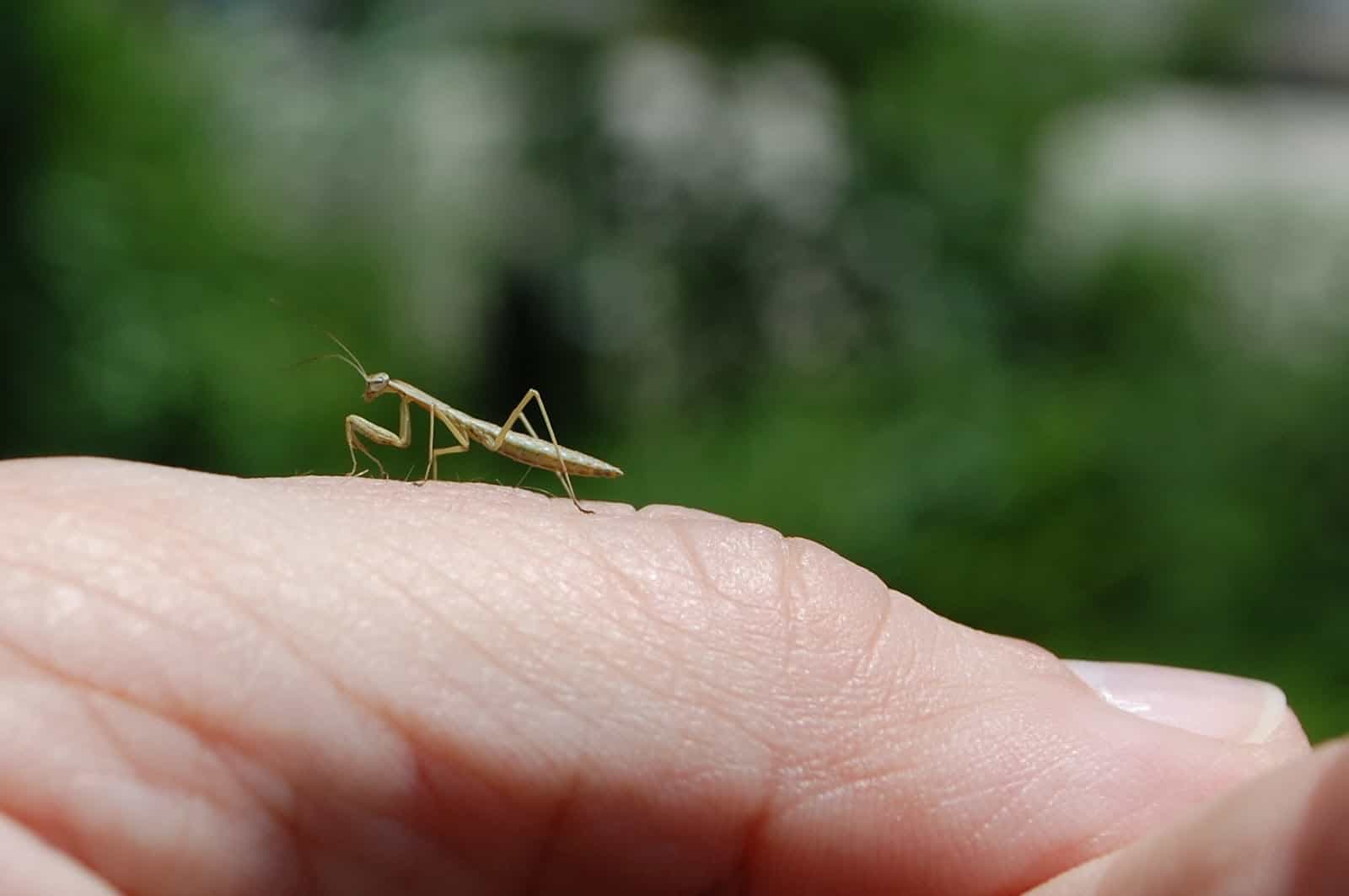I took this photo in June 2012. A miniature praying mantis is sitting on my thumb.It is a praying mantis nymph, an immature stage, and a very cute example of how insects grow.
There are two kinds of insect metamorphosis: complete (also called holometabolic) and incomplete (also called partial orhemimetabolic). The monarch butterfly is a well-known example of an insect that undergoes complete metamorphosis. Its life stages are egg, larva (caterpillar), pupa (chrysalis), and adult. Caterpillars have several stages, growing larger and shedding their skin for each.
The praying mantis grows by incomplete metamorphosis in which its appearance changes less dramatically. Its life stages are egg, nymph, and adult. Nymphs resemble adults but are smaller and lack adult features like wings and functioning genitals. A praying mantis grows through several nymphal stages, increasing in size and shedding a skin for each.
The insect in the photo will have completed its life by now. Adults die when the cold weather comes. But with luck it mated, if male, or, if female, mated and left an egg case to overwinter. Next summer I’ll check the bush where I found this one and look for its children.
Ogden Nash wrote this poem called The Praying Mantis:From whence arrived the praying mantis?From outer space, or lost Atlantis?glimpse the grin, green metal mugat masks the pseudo-saintly bug,Orthopterous, also carnivorous,And faintly whisper, Lord deliver us.
Julie Feinstein
I am a Collection Manager at the American Museum of Natural History, an author, and a photographer. I live in New York City. I recently published my first popular science book, Field Guide to Urban Wildlife, an illustrated collection of natural history essays about common animals. I update my blog, Urban Wildlife Guide, every Sunday.

Leave a Reply